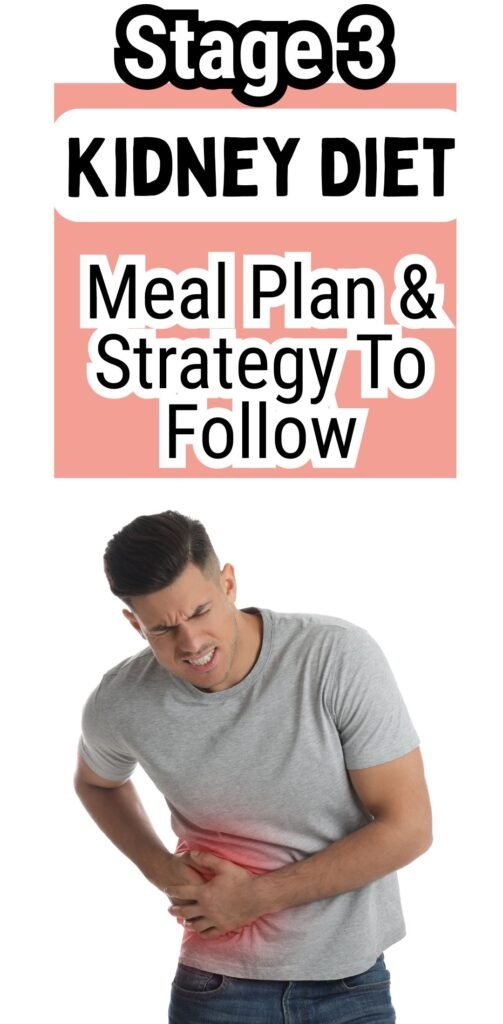If you’re searching for kidney diet food lists healthy enough to support your kidneys, you’re in the right place. Eating for kidney health means making smart choices—like limiting sodium and potassium—while still enjoying a balanced, flavorful diet. For example, research shows that a well-planned kidney-friendly diet can help slow the progression of kidney disease by up to 50%. This guide covers the best foods to include, how to build a kidney-safe meal plan, and why these lists matter for your long-term health.
Kidney Diet Food Lists: Healthy Basics
If you or someone you love needs to follow a kidney diet, understanding the healthy basics is your first step toward protecting kidney function and feeling your best. Here’s what makes kidney diet food lists healthy and effective:
- Focus on Low-Sodium Foods:
Limiting salt helps control blood pressure and reduces strain on the kidneys. Look for “no salt added” or “low sodium” labels, and flavor foods with herbs and spices instead. - Watch Your Potassium and Phosphorus:
Not everyone with kidney concerns needs to limit these minerals, but high levels can be dangerous if your kidneys aren’t filtering well. Bananas, oranges, potatoes, and dairy are examples of high-potassium or high-phosphorus foods that may need to be swapped for safer choices like apples, berries, or rice milk. - Choose Lean Proteins in the Right Amount:
Protein is essential for health, but too much can overwork your kidneys. Lean chicken, fish, or egg whites are smart picks—always follow your doctor’s recommended portions. - Fill Up on Fruits and Veggies (the Right Kinds):
Fresh produce is healthy, but some fruits and vegetables are easier on the kidneys than others. Berries, cauliflower, cucumbers, and apples are great examples to add to your list. - Opt for Whole Grains and Healthy Carbs:
Oats, rice, and corn-based products are often kidney-friendly in moderation, especially compared to high-phosphorus grains like bran. - Stay Hydrated (the Smart Way):
For most kidney patients, drinking enough water is important, but fluid needs can change as kidney function changes. Always follow your doctor’s or dietitian’s advice.
Starting with these kidney diet food lists, healthy basics will set you up for more balanced meals and better health—one bite at a time!
Top Healthy Foods to Include in a Kidney Diet
Adding the right foods to your kidney diet can help you enjoy meals while protecting your health. Here are some of the top healthy choices to include:
- Red Bell Peppers:
Low in potassium and rich in vitamins A and C, red bell peppers are flavorful and add color to any dish. - Cabbage:
Packed with fiber, vitamin K, and antioxidants, cabbage is gentle on the kidneys and easy to add to soups, salads, or stir-fries. - Cauliflower:
A versatile veggie, cauliflower provides vitamin C, folate, and fiber without overloading you with potassium. - Blueberries:
Full of antioxidants and low in potassium, blueberries make a perfect snack or smoothie ingredient for kidney health. - Egg Whites:
High in protein but low in phosphorus, egg whites are a great choice for meeting your protein needs without stressing your kidneys. - Skinless Chicken Breast:
Lean and low in phosphorus compared to dark meat or processed poultry, skinless chicken breast is easy to cook and season. - Olive Oil:
A healthy fat, olive oil, helps provide calories and flavor without adding sodium or unhealthy fats. - Apples:
Crisp and sweet, apples are low in potassium and make an easy, portable snack. - Pineapple:
Unlike many tropical fruits, pineapple is lower in potassium, making it a safe treat for many kidney diets. - White Rice:
White rice is lower in phosphorus and potassium than brown rice, making it a good carb source for those watching mineral intake.
Including these foods in your kidney diet food lists, a healthy plan can help you create satisfying, flavorful meals that support your kidney health every day!
Foods to Limit or Avoid for Kidney Health
If you want to keep your kidneys working their best, it’s important to know which foods can add extra strain or worsen kidney problems. Here’s what to limit or avoid:
- High-Sodium Foods:
Canned soups, salty snacks, processed meats, fast food, and packaged meals are loaded with sodium, which can raise blood pressure and put extra work on your kidneys. - High-Potassium Foods:
If your doctor recommends limiting potassium, cut back on bananas, oranges, potatoes, tomatoes, avocados, spinach, and dried fruits. Too much potassium can cause dangerous heart rhythms if your kidneys can’t filter it out. - High-Phosphorus Foods:
Limit foods like processed cheese, cola drinks, nuts, seeds, bran cereals, and organ meats. Phosphorus can build up in your blood and weaken bones when your kidneys aren’t filtering well. - Dairy Products:
Milk, yogurt, and cheese are high in both phosphorus and potassium. Stick to small portions or choose kidney-friendly alternatives as advised by your doctor or dietitian. - Whole Wheat Bread and Brown Rice:
While healthy for many, whole grains are higher in potassium and phosphorus. White bread and white rice are often safer choices for kidney health. - Dark-Colored Sodas:
Many colas and dark sodas contain added phosphorus, so it’s best to avoid them in favor of water, clear sodas, or herbal tea. - Processed Meats:
Bacon, sausage, hot dogs, and deli meats are not only high in sodium but may also contain added phosphorus and unhealthy fats. - Convenience Foods:
Frozen meals, instant noodles, and boxed mixes are usually high in sodium and phosphorus additives.
Always check nutrition labels and talk with your healthcare provider about which foods you need to limit most. With the right choices, you can keep your kidney diet food lists healthy and supportive for your long-term wellness!
How to Read Nutrition Labels for a Healthy Kidney Diet
Learning how to read nutrition labels is a game-changer for anyone following kidney diet food lists healthy enough for real results. Here’s what to look for every time you shop:
- Check the Serving Size First
Nutrition facts are based on one serving. Make sure the amount you plan to eat matches the serving size listed, or adjust your calculations. - Look at Sodium Content
Choose foods with less than 140 mg of sodium per serving (labeled as “low sodium”). Too much sodium can raise blood pressure and strain your kidneys. - Review Potassium and Phosphorus (If Listed)
Not all labels include potassium or phosphorus, but if they do, look for products with the lowest amounts per serving—especially if your doctor or dietitian recommends limiting these minerals. - Compare Protein Content
While protein is important, those with kidney disease may need to limit it. Look for lean sources and check how much protein is in each serving. - Watch Out for Phosphorus Additives
Scan the ingredients list for words like “phos-” (phosphoric acid, sodium phosphate, etc.). These additives are easily absorbed and can quickly raise blood phosphorus levels. - Check for Added Sugars and Saturated Fats
Aim for foods with little or no added sugar and low saturated fat to protect both your kidneys and your heart. - Look for “Kidney-Friendly” or “Low-” Claims
Some foods are labeled as “kidney-friendly,” “low sodium,” or “low phosphorus”—these can be helpful shortcuts, but always double-check the numbers on the nutrition label.
By mastering food labels, you’ll feel more confident choosing products that keep your kidney diet food lists healthy and your meals balanced.
Find Out If You’re Eating Too Many Hidden Sugars
Could Hidden Sugar Be Sneaking Into Your Diet?
Take our quick, free quiz to reveal if you’re getting too much hidden sugar—plus get instant tips to take control of your cravings and boost your energy!
Take the Free Hidden Sugars Quiz Now7-Day Kidney Diet Food Meal Plan
Day 1
Breakfast: Oatmeal with blueberries
Lunch: Egg white salad sandwich on white bread, side of cucumber slices
Snack: Apple slices
Dinner: Grilled skinless chicken breast, white rice, steamed green beans
Day 2
Breakfast: Pineapple and white toast
Lunch: Cabbage and carrot slaw with olive oil dressing, baked tilapia
Snack: Unsalted rice cakes
Dinner: Roasted cauliflower, skinless turkey breast, white rice
Day 3
Breakfast: Sliced strawberries with cream of wheat
Lunch: Chicken salad (with apples, celery, egg whites) on white bread
Snack: Fresh grapes
Dinner: Steamed broccoli, grilled pork tenderloin, boiled pasta
Day 4
Breakfast: White toast with unsweetened applesauce
Lunch: Tuna salad with iceberg lettuce and cucumbers
Snack: Pear slices
Dinner: Roasted zucchini, skinless chicken breast, white rice
Day 5
Breakfast: Rice porridge with blueberries
Lunch: Egg white omelet with red bell peppers
Snack: Pineapple chunks
Dinner: Baked cod, sautéed cabbage, white bread roll
Day 6
Breakfast: Oatmeal with apple slices
Lunch: Chicken and rice bowl with steamed cauliflower
Snack: Unsalted popcorn
Dinner: Baked turkey burger (no bun), boiled green beans, white pasta
Day 7
Breakfast: Cream of wheat with strawberries
Lunch: Grilled skinless chicken salad with iceberg lettuce and cucumbers
Snack: Fresh grapes
Dinner: Roasted cauliflower, skinless tilapia, white rice
Check out our latest posts:
- Low Cortisol Snacks: 25 Smart Ways to Lower Stress Naturally
- Bariatric Full Liquid Diet Menu PDF | Easy Guide for Post-Surgery Nutrition
- Hormone Balancing Diet Postpartum – Restore Energy, Mood, and Health After Birth
- Hormone Balancing Diet for Fertility – Boost Reproductive Health Naturally
- Hormone Balancing Diet Food List, Grocery, 7 Day Meal Plan + Free PDF
Stage 3 Kidney Diet
If you’ve been told you have stage 3 chronic kidney disease (CKD), your diet plays a huge role in protecting your kidney function and maintaining your overall health. A stage 3 kidney diet focuses on reducing the workload on your kidneys, controlling blood pressure, and managing nutrients like sodium, potassium, protein, and phosphorus.
Key Points for a Stage 3 Kidney Diet:
- Limit Sodium:
Aim for less than 2,000 mg of sodium per day. Avoid salty snacks, canned soups, processed foods, and restaurant meals. - Monitor Protein Intake:
Most people with stage 3 CKD need a moderate amount of protein—often around 0.8 grams per kilogram of body weight daily. Choose lean sources like skinless poultry, fish, and egg whites. - Watch Potassium:
Your doctor may ask you to limit high-potassium foods like bananas, oranges, potatoes, and tomatoes, especially if your potassium is high on blood tests. - Limit Phosphorus:
Cut back on foods high in phosphorus, such as dairy, nuts, beans, bran cereals, and dark-colored sodas. - Stay Hydrated—But Don’t Overdo It:
Drink water as recommended by your doctor, but avoid excessive fluid intake. - Eat Plenty of Kidney-Friendly Fruits and Vegetables:
Berries, apples, grapes, cauliflower, and cabbage are great choices. - Read Nutrition Labels:
Always check for sodium, potassium, and phosphorus content.
Why This Matters:
A stage 3 kidney diet helps slow kidney disease progression, keeps you feeling better, and can help you avoid complications. Always work with your doctor or a renal dietitian for a plan tailored to your needs.
Can I Reverse My Kidney Condition Through Diet?
You can’t usually “reverse” chronic kidney disease (CKD), but you can slow its progression and protect your remaining kidney function through a healthy, kidney-friendly diet. For most people, following a kidney diet—low in sodium, balanced in protein, and mindful of potassium and phosphorus—can help prevent further damage and reduce symptoms. Some people even see improved lab results and feel better overall.
Early intervention is key. Diet changes, along with controlling blood pressure, blood sugar, and staying active, give your kidneys the best chance to keep working well for as long as possible. Always work with your doctor or a registered dietitian to get a plan that’s right for your stage and health needs.
In short: Diet can’t cure CKD, but it’s one of your most powerful tools to help slow it down and live well.
3-Day Sample Meal Plan For Kidney Diet Stage 3
Sample Stage 3 Kidney Diet Meal Plan
Breakfast:
- Oatmeal made with water
- Fresh blueberries
- One slice white toast with a small amount of unsalted butter
- Herbal tea or black coffee
Mid-Morning Snack:
- Apple slices
Lunch:
- Egg white salad sandwich on white bread (use light mayo and no added salt)
- Steamed green beans
- Water with a squeeze of lemon
Afternoon Snack:
- Rice cakes or unsalted popcorn
Dinner:
- Grilled skinless chicken breast (season with herbs, not salt)
- White rice
- Steamed cauliflower
- Small side salad (lettuce, cucumber, olive oil, and vinegar)
Evening Snack:
- Fresh pineapple chunks
Extra Tips:
- Use herbs, lemon, and pepper to add flavor without salt.
- Avoid high-potassium and high-phosphorus foods unless your dietitian says otherwise.
- Always watch your portion sizes, especially with protein.
Tips for Sticking to a Kidney Diet Food Lists Healthy Plan
Making healthy food choices every day can be challenging, but with the right strategies, you can stick to your kidney diet food lists and support your health long-term. Here are some helpful tips:
- Plan Your Meals Ahead:
Create a weekly meal plan and shopping list based on your kidney diet food lists and healthy guidelines. This reduces last-minute choices and helps you avoid high-sodium or high-phosphorus foods. - Read Labels Every Time:
Ingredients and nutrient content can change—even in familiar products. Make label reading a habit to keep your diet on track. - Cook at Home Whenever Possible:
Home-cooked meals give you total control over sodium, phosphorus, and potassium levels. Try simple recipes using fresh, kidney-friendly ingredients. - Flavor With Herbs and Spices:
Instead of reaching for the salt shaker, boost flavor with fresh or dried herbs, lemon juice, garlic, or black pepper. - Portion Control Matters:
Even healthy foods can cause problems if eaten in large amounts. Use measuring cups or a kitchen scale to help manage portion sizes. - Stay Hydrated (But Not Overhydrated):
Follow your doctor’s or dietitian’s advice about how much fluid you need each day, especially if you’re on dialysis or have fluid restrictions. - Ask for Support:
Involve family and friends in your meal planning and cooking. Don’t hesitate to reach out to a dietitian for personalized advice and new recipe ideas.
Remember, every positive choice adds up! Sticking to your kidney diet food lists, healthy plan will help you feel your best and protect your kidneys for the long haul.
Are You Drinking Enough Water? Find Out Now!
Are You Drinking Enough Water?
Staying hydrated is one of the simplest ways to boost your energy, improve your skin, and support healthy weight loss.
But how much water does your body really need?
Take 30 seconds to find your ideal daily water intake using our free hydration calculator!
Calculate Your Perfect Water Intake NowFrequently Asked Questions
Can I eat fruit on a kidney diet?
Yes, you can eat fruit on a kidney diet, but some fruits are higher in potassium and should be limited, especially if your doctor advises it. Berries, apples, and grapes are generally good choices for most kidney diets.
How much protein is safe on a kidney diet?
Protein needs can vary depending on the stage of kidney disease. Most people with kidney concerns need to moderate their protein intake, focusing on lean options like chicken, fish, and egg whites, but it’s important to get personalized advice from your healthcare provider.
Are whole grains safe for kidney health?
Whole grains can be part of a healthy kidney diet, but some—like bran and wheat germ—are higher in phosphorus and may need to be limited in advanced kidney disease. Oats, rice, and corn-based products are often safe in moderation.
Is dairy allowed on a kidney diet?
Some dairy foods are high in phosphorus and potassium, so portion control is important. Many people on a kidney diet switch to lower-phosphorus options like rice milk (non-enriched) or use dairy alternatives, always checking labels for added minerals.
What spices can I use if I need to limit salt?
Herbs like basil, parsley, thyme, and spices like black pepper, paprika, and garlic powder can add flavor to your meals without adding sodium. Lemon juice and vinegar are also great ways to brighten dishes while keeping your kidney diet food lists healthy.
How can I enjoy snacks on a kidney diet?
Great kidney-friendly snacks include unsalted popcorn, rice cakes, apple slices, and homemade smoothies with low-potassium fruits. Always watch portion sizes and check with your dietitian to keep your snacks aligned with your healthy kidney diet plan.
Conclusion
In summary, choosing the right kidney diet food list healthy for your needs can make a real difference in protecting your kidneys and supporting your overall wellness. By focusing on fresh fruits, low-sodium options, lean proteins, and the right balance of nutrients, you’re taking proactive steps toward better kidney health every day. Remember, these lists aren’t just about restrictions—they’re about empowering you to make delicious, satisfying meals that fit your lifestyle and health goals. Keep exploring new foods, work with your healthcare team, and use these kidney diet food lists healthy as your guide to a happier, healthier future.





